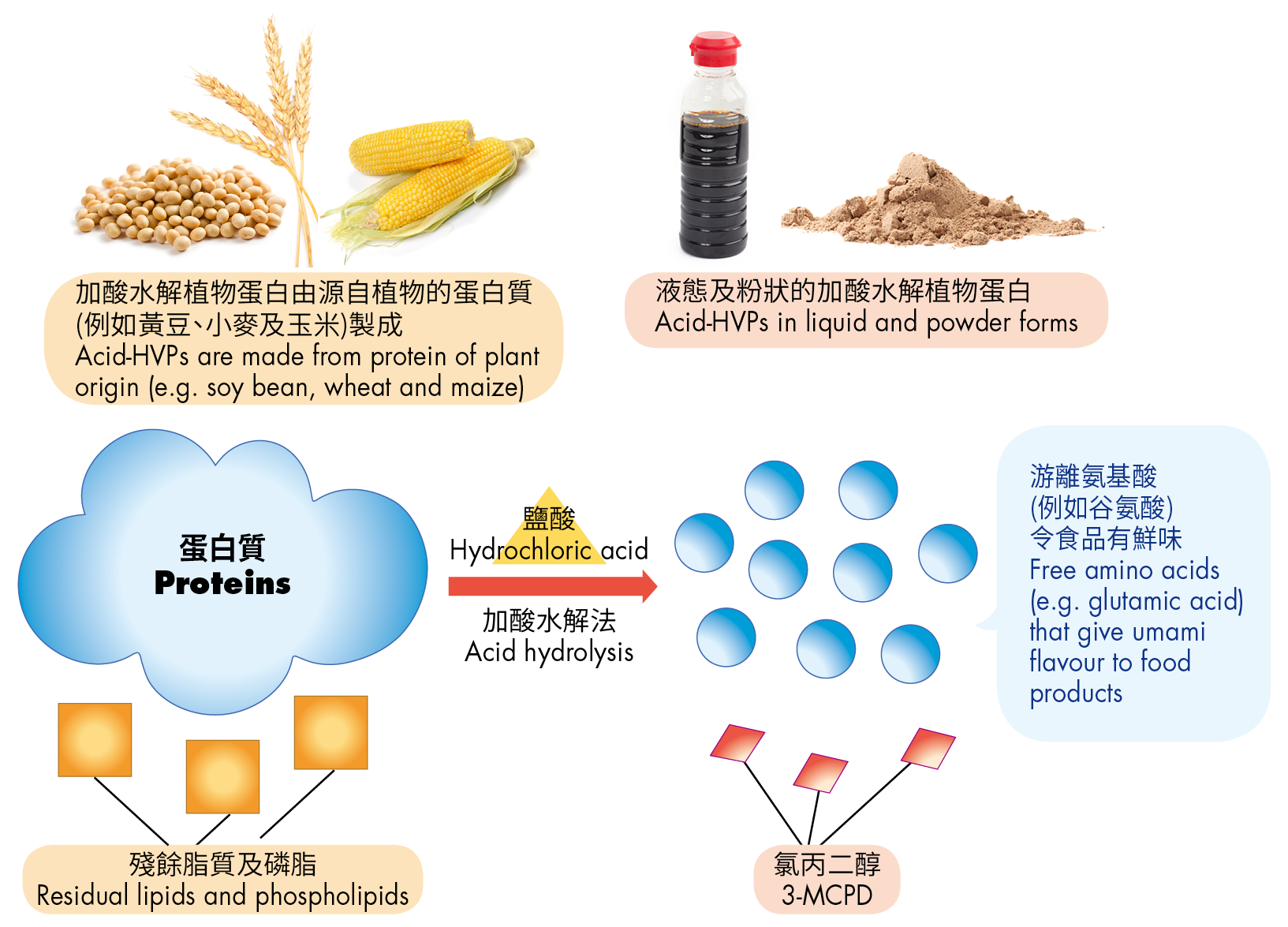
Food Safety Focus (156th Issue, July 2019) – Food Safety Platform
The Process Contaminant 3-MCPD in Condiments
Reported by Mr. Kenneth YUNG, Research Officer,
Risk Assessment Section, Centre for Food Safety
Condiments such as soy sauce are often used to add flavours to food. While some of them were made by natural fermentation that have a long history of use, others were manufactured using acid-hydrolysed vegetable proteins (acid-HVPs). In the past, public concern was raised when certain acid-HVPs containing soy sauce samples were found to contain high levels of a process contaminant called 3-monochloropropane-1,2-diol (3-MCPD).
3-MCPD in Acid-HVPs and Condiments
The traditional production of soy sauce involves natural fermentation of soy bean and this process could take up from three months to a year to produce the desirable flavour. Of note, soy sauce made by natural fermentation does not contain or only contain trace amount of 3-MCPD. One of the ways to enhance the flavour of soy sauce within a shorter production time is the addition of acid-HVPs. Acid-HVPs are produced via the hydrolysis of vegetable proteins in the presence of an acid. Other than soy sauce, acid-HVPs may also be used as flavour enhancers and ingredients in other condiments, such as oyster sauce, chicken powder and gravy granules. 3-MCPD may be formed during the production of acid-HVPs and may be present in condiments with acid-HVPs added.

The production of acid-HVPs involve acid hydrolysis as a major step. Proteins derived from vegetable sources are hydrolysed by hydrochloric acid to form free amino acids, which give umami flavour to food products. Residual lipids and phospholipids that are not removed from the source may react with hydrochloric acid under certain conditions to form 3-MCPD.
Adverse Health Effects of 3-MCPD
Animal studies showed long term exposure to high levels of 3-MCPD caused adverse effects on kidneys, the central nervous system and male reproduction system. The International Agency for Research on Cancer classified 3-MCPD as a group 2B agent, i.e. possibly carcinogenic to humans.
Local Situation
In previous studies conducted jointly by the Food and Environmental Hygiene Department and the Consumer Council, the level of 3-MCPD in all condiment samples were below the relevant maximum level established by the Codex Alimentarius Commission (Codex). Surveillance data of soy sauce and oyster sauce in recent years also suggested that the level of 3-MCPD in samples collected from the local market did not exceed the Codex standard.
Ways to Reduce the Formation of 3-MCPD in Condiments
Since 3-MCPD is a contaminant that arises from food manufacturing process, the trade is advised to observe good manufacturing practice and reduce the level of 3-MCPD in condiments as low as reasonably achievable. To assist the trade in reduction of 3-MCPD in condiments, the Codex has published the "Code of Practice for the Reduction of 3-Monochloropropane-1,2-diol (3-MCPD) during the Production of Acid-HVPs and Products that Contain Acid-HVPs." Approaches to reduce the level of 3-MCPD in acid-HVPs include (but not limited to) :
- During acid hydrolysis, the temperature and the heating time must be simultaneously controlled.
- A secondary alkaline hydrolysis may remove any 3-MCPD formed during acid hydrolysis.
- Use sulphuric acid, instead of hydrochloric acid, during acid hydrolysis in manufacture of acid-HVPs.


